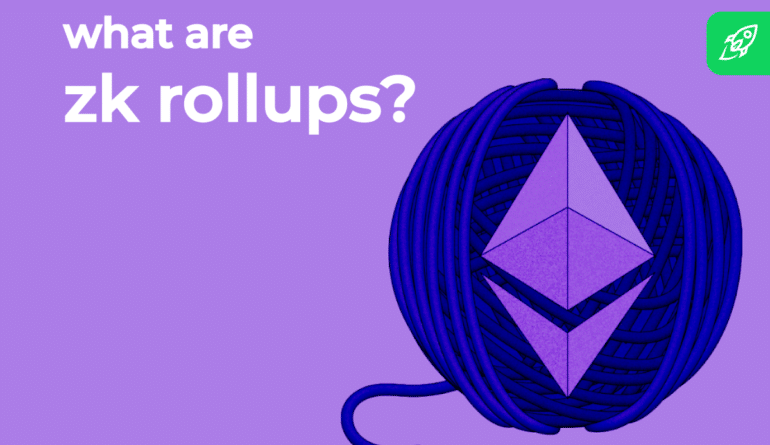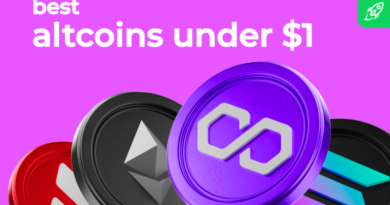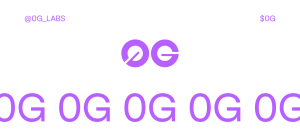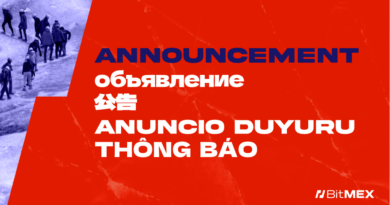ZK Rollups: What They Are and Why You Should Care
Blockchains are powerful, but slow. The Ethereum network, for instance, handles about 15 transactions per second. That’s fine for early adopters—but not for global scale. As demand grows, so do delays and gas fees. A simple swap might cost $20 or more during peak hours.
To fix this, developers created a new kind of layer 2 scaling solution: ZK rollups.
What Are ZK Rollups?
So, what is a ZK rollup exactly?
A ZK rollup is a type of rollup protocol. It processes transactions in batches, off the main chain, then sends a tiny summary back. Instead of overloading the base layer (like Ethereum) with every user action, a ZK rollup compresses the activity and shares just the essentials.
The big idea is to let users interact with the blockchain cheaply and quickly without relying on any centralized entity. In other words, it scales blockchain usage without sacrificing security.
Zero-knowledge rollups use advanced math to prove that every step taken outside the main chain is correct. You don’t have to trust the processor—you trust the math behind it. This approach cuts costs, increases transaction throughput, and improves speed.

What Does “Zero-Knowledge” Mean for ZK-Rollups?
“ZK” stands for zero-knowledge, a concept from cryptography. A zero-knowledge proof lets you show something is true without revealing how or why it actually is. It’s like saying, “I solved the puzzle, and here’s the code to prove it,” without showing your solution.
In rollups, this means generating a math-based proof that shows a transaction batch followed the rules. Ethereum verifies the proof without checking each individual action. So you get trust without revealing transaction execution.
This makes ZK rollups extremely efficient. They prove valid transactions were processed correctly, but don’t need to replay every step on-chain.
Why are ZK Rollups important?
ZK rollups ease Ethereum congestion by handling most transactions off-chain. The main chain can only process 15 transactions per second, which causes delays and high gas fees during peak hours. By moving activity off-chain and providing only the results to Ethereum, ZK rollups help the network scale efficiently.
Now let’s talk costs. On zkSync Era, sending ETH averages around $0.16. That same transfer on Ethereum Layer 1 could cost $3 to $10 depending on traffic. That kind of fee compression lets users interact more without worrying about small balances being eaten by gas.
ZK rollups also give users near-instant transaction finality. Since the network checks a proof instead of waiting for someone to catch fraud, like with optimistic rollups, funds can be withdrawn as soon as the proof is accepted. That’s a huge usability win, especially compared to solutions that add wait times.
And finally, ZK rollups don’t trade speed for trust. Every update must pass a cryptographic check. This means no one—not even the rollup operator—can sneak in invalid data or steal funds.
What is an example of a ZK rollup?
Let’s take zkSync Era as a case study. It launched in March 2023 as one of the first ZK rollup solutions fully compatible with Ethereum smart contracts. Developers could deploy existing code with only a few changes. Users just connected a wallet and used apps—same as on the mainnet, but faster and cheaper.
In its first 10 days, zkSync processed over 3.3 million transactions and bridged $100M+ in assets. Today, it secures more than $500 million. This shows the demand for rollups is real, not just theoretical.
Another leading example is StarkNet. Built by StarkWare, it uses STARK-based proofs and a custom programming language called Cairo. It went live in 2021 and focuses on increasing transaction throughput while keeping transaction processing efficient.
Then there’s Polygon zkEVM. It launched in 2023 with a focus on full Ethereum compatibility and is backed by a large developer community. Major apps like Uniswap have deployed on it to reduce fees for users.
These projects show that ZK rollups rely on advanced math—not just trust—to scale the blockchain. They prove every update is correct and make the chain cheaper to use. And all without compromising the core values of decentralization.
How Do ZK Rollups Work?
ZK rollups follow a simple but powerful three-step process: they execute transactions, prove they’re valid, then send the results to Ethereum.
H3 Processing transactions off-chain
The first step happens off-chain. Users interact with apps and sign transactions, just like on Ethereum. But instead of broadcasting every single transaction on-chain, rollups execute them in batches. This activity is computed off-chain by a rollup operator, also known as a sequencer.
Let’s say 1,000 people trade tokens or transfer ETH. These actions are bundled together and executed off-chain. The rollup’s internal system updates user balances and contract states accordingly. The result is a fresh snapshot of the rollup’s state.
Creating a cryptographic proof (zero-knowledge proof)
Once transactions are processed, the rollup creates a zero-knowledge proof. This is a small piece of math showing that the whole transaction batch was correct—without revealing the full transaction details.
This proof uses zk-SNARK or zk-STARK technology. It shows all actions followed the rules—no double-spends, no invalid signatures. If even one part was wrong, the proof wouldn’t be verified.
This step ensures transaction validity through validity proofs, not trust. It doesn’t matter who runs the sequencer. If the math checks out, Ethereum accepts the update.
Submitting that proof to the main blockchain
In the final step, the rollup submits the proof verification and a summary of the new state to Ethereum. Only the essentials—not all the storing transaction data—are posted. This saves gas and keeps the network lean.
The proof confirms the batched transactions were valid. Ethereum doesn’t re-check every trade. It can trust the proof.
This flow allows rollups to reduce transaction costs dramatically. A single proof covers thousands of actions. So instead of paying $5 for a single token swap, users might pay a few cents—or less.
That’s the principle of how ZK rollups work. They scale without compromising security. By verifying batches through ZK proofs, they keep Ethereum decentralized, affordable, and fast.

Benefits of ZK Rollups
ZK rollups make blockchains faster and cheaper. They process actions in bulk and prove them with math—not trust. By design, ZK rollups bundle transactions and submit a single proof, cutting transaction costs while increasing speed.
They also offer strong security guarantees. Each update is backed by cryptography, not a central party. Users don’t have to trust a team or watch for fraud.
Unlike optimistic rollups, ZK rollups confirm changes instantly. There’s no waiting period. The network knows right away if the data is correct.
Most importantly, ZK rollups inherit the security of their underlying blockchain. They don’t just copy Ethereum—they depend on it for final approval. That makes them reliable, even under stress.
Together, these benefits make ZK rollups a powerful upgrade for modern blockchain networks.
Types of Zero-Knowledge Rollup (ZK Rollup)
ZK rollups come in different forms. They vary by proof system, architecture, and how they handle data.
Proof System
There are two main types: zk-SNARKs and zk-STARKs. SNARKs are efficient but need a trusted setup. STARKs are more scalable and transparent. Both serve the same goal: verifying batches through math, not trust.
ZK rollups using SNARKs include zkSync and Polygon zkEVM. StarkNet uses STARKs.
Circuit Design
Some ZK rollups aim to match Ethereum exactly. Others simplify logic to make proving faster. For example, zkEVMs allow running Solidity apps with little change. Meanwhile StarkNet uses a custom language called Cairo, which is optimized for transaction execution, but is less EVM-like.
These design choices affect compatibility and efficiency.
Data Availability Solution
Data must be accessible. Some rollups post it directly on Ethereum, ensuring long-term security. Others rely on data availability committees or off-chain services. These are cheaper but introduce risks.
New solutions like data availability sampling are aiming to fix this. They check if data exists without posting all of it.
Each design balances cost, security, and performance. But all ZK rollups aim to scale Ethereum—without compromising its reliability.

ZK Rollups vs. Optimistic Rollups
ZK rollups and optimistic rollups both aim to scale Ethereum by shifting work off-chain. But they handle correctness differently. ZK rollups use validity proofs to confirm batches instantly. Optimistic rollups assume all is well—unless a fraud proof says otherwise.
This difference affects finality. A typical optimistic rollup batch introduces delays to allow for challenges. In contrast, ZK rollup transactions finalize as soon as the proof is verified.
ZK rollups are faster and more secure out of the box—but more complex to develop.
Want the full breakdown? Read our ZK Rollups vs. Optimistic Rollups comparison.
Use Cases of ZK Rollups
ZK rollups unlock real-world blockchain scalability across DeFi, NFTs, gaming, and identity.
1. DeFi Applications
In DeFi, they help platforms like Uniswap cut fees by bundling transactions. One proof replaces hundreds of swaps—it’s fast and efficient.
2. NFT Minting and Trading
For NFTs, rollups enable minting at a fixed cost, even during high traffic. Immutable X uses off-chain transactions to support gas-free trading at scale.
3. Gaming and Microtransactions
Games benefit from transactions executed off-chain. Each action settles quickly, making real-time play possible.
4. Identity and Privacy Tools
In identity apps, ZK rollups attempt to verify users privately. ZK proofs can confirm user info (like age or citizenship) without revealing personal data.
Challenges and Considerations
ZK rollups are powerful, but not frictionless. Generating proofs takes time and computation, which can drive up costs. Developer tools are improving, but there’s still room to grow—especially outside EVM-compatible environments.
Many rollups still rely on centralized sequencers or admin keys. That means decentralization is a work in progress. And while rollups periodically post valid batches to Ethereum for security, the cost of posting data on-chain remains a challenge.
Bridges, wallets, and tooling can also vary across ecosystems. These issues are being solved, but users should test with caution and start small.

The Future of ZK Rollups
With new dev tools, zkEVMs, and growing community support, ZK rollups are easier to build on than ever. Teams like Polygon, zkSync, and StarkWare are moving fast to decentralize sequencers and streamline proofs. As Ethereum adds data space (via EIP-4844), ZK rollups will likely become the default layer for apps and users alike.
Final Thoughts
ZK rollups offer a long-term scaling solution that doesn’t compromise on trust or performance. They make blockchain use faster, cheaper, and more secure. While still evolving, they’re already powering major apps in DeFi, NFTs, and gaming. If you want to interact on Ethereum without paying high gas fees or waiting for days, ZK rollups are worth exploring. Just start small, and enjoy the speed.
FAQ
What is the purpose of a zero-knowledge rollup?
A zero-knowledge rollup makes blockchains more scalable without sacrificing security. It processes transactions off-chain, then proves the result to Ethereum using cryptography. This cuts fees, reduces congestion, and keeps the network decentralized. In short, it helps Ethereum grow while staying trustless.
How much does a ZK rollup cost?
Using a ZK rollup is much cheaper than Layer 1. On zkSync Era, an ETH transfer costs about $0.16, compared to $3–$10 on Ethereum. Fees vary by network and usage but are typically 10x–100x lower. You’ll also pay a gas fee when bridging funds in or out.
Will ZK Rollups replace all other Layer 2 solutions?
Yes, that’s likely to happen eventually. ZK rollups are expected to become the dominant scaling method long-term. They offer stronger security and faster finality than optimistic rollups. Ethereum’s roadmap supports this shift, and some projects are already migrating.
That said, other Layer 2s may still serve niche roles or evolve alongside ZK tech.
Do I need a special wallet to use ZK Rollups?
Usually, no. Most ZK rollups work with MetaMask or other standard wallets. For StarkNet, you’ll need something like Argent X. But in most cases, setup is quick and easy.
Disclaimer: Please note that the contents of this article are not financial or investing advice. The information provided in this article is the author’s opinion only and should not be considered as offering trading or investing recommendations. We do not make any warranties about the completeness, reliability and accuracy of this information. The cryptocurrency market suffers from high volatility and occasional arbitrary movements. Any investor, trader, or regular crypto users should research multiple viewpoints and be familiar with all local regulations before committing to an investment.
The post ZK Rollups: What They Are and Why You Should Care appeared first on Cryptocurrency News & Trading Tips – Crypto Blog by Changelly.
Cryptocurrency News & Trading Tips – Crypto Blog by Changelly




















